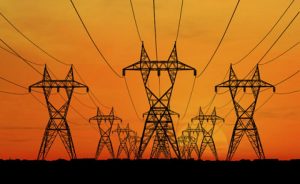
by Wayne Porter
As climate change drives this summer’s severe weather events like the prolonged drought with dry and 110°+ days that persist in Arizona, the rain-less lightning storms that have sparked the horrendous mega fires in California, or back-to-back storms that have engulfed the lowlands of the South, our electrical grids are being tested like never before. Whether threatened by natural or human-caused disasters, simply the fragility of an aging infrastructure, or even sabotage by bad actors, our communities are at great risk.
Resilience Hubs are one method of fortifying the grid and building the confidence and experience necessary to prepare for the possibility of an extended disruption of the grid. These community-based facilities are designed to provide local area residents with backup power that can operate during long power outages while routinely providing economical, reliable power outside of these unplanned events.
Resilience Hubs are created with the goal of leveraging existing community centers that are known and trusted by the people who live in the neighborhoods they serve. Resilience Hubs house power systems capable of reliably sustaining operations during extended power outages of up to 72 hours, but which also function under normal operating conditions.
According to a report issued in 2018 by the Urban Sustainability Directors Network (USDN) – a Resilience Hub is a hybrid system that includes multiple types of energy generation, such as photovoltaic panels and firm generation (powered by diesel or natural gas), electricity storage (batteries), along with implementation of energy efficiency measures in order to avoid unnecessarily oversized systems.
Since these resilient energy hubs are designed to include diverse power sources that operate efficiently during normal conditions and can also provide backup power during an outage, this approach also empowers communities to select more sustainable energy choices and contributes to reductions in carbon emissions over time.
The Urban Sustainability Directors Network report further states that:
Designed well, Resilience Hubs can equitably enhance community resilience while reducing carbon emissions and improving local quality of life. They are a smart local investment with the potential to reduce the burden on local emergency response teams, improve access to health improvement initiatives, foster greater community cohesion, and increase the effectiveness of community-centered institutions and programs.
Resilience/resilient energy hubs will be important components of the power networks of the future if communities choose to invest in sustainable energy systems, particularly for electricity generation. These communities will simultaneously reduce the risks that are imposed by the numerous threats to the grid and provide a valuable resource to area residents and businesses.